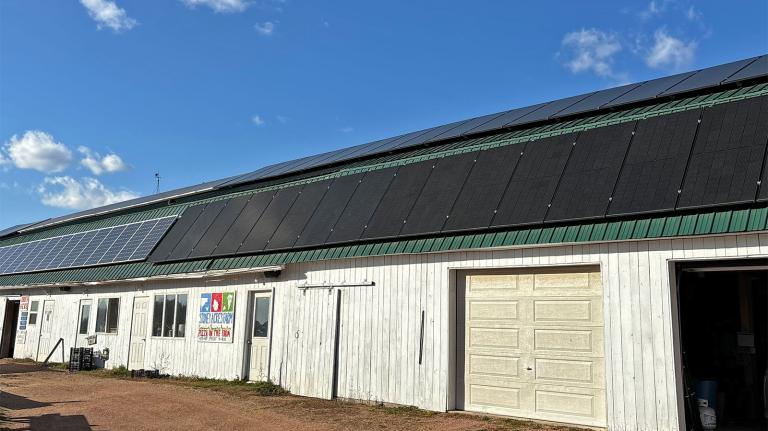The most pervasive phenomenon you’re not aware of affects half the people alive right now. It prevents them from fully taking advantage of whole fields of human activity and fuels the degradation of their livelihoods and the environment.
We’re not talking about the iPhone.
Stumped? It’s energy poverty.
What’s that?
In its most basic form, energy poverty is a lack of access to modern energy sources and their uses. Whether this lack of access is physical or financial in nature, it means that someone experiencing energy poverty can’t tap into life-sustaining (and convenient!) energy services. About 80 percent of those experiencing energy poverty live in rural sub-Saharan Africa and South Asia.
Energy poverty has a wide range of consequences. Take the act of cooking. A traditional wood-burning cookstove — often used indoors — releases particulate matter and carbon monoxide when it’s in use. This means that people hovering over these cookstoves (largely women) are prone to the adverse health effects of inhaling all these fumes. The Global Alliance for Clean Cookstoves estimates that the use of traditional cookstoves accounts for up to 1.9 million premature deaths each year.
That’s awful. How do we change that?
Unfortunately, alleviating energy poverty is tricky business. In a perfect world, all electricity sources are clean, stable, resilient, and affordable. Some people who spend a lot of time thinking about energy poverty argue that some of the best solutions come in the form of low-cost, decentralized, renewable electricity sources lighting up energy-efficient light bulbs and powering microgrids, electric water pumps, and clean cookstoves. Obviously, we aren’t there yet.
And here’s where things start to get complicated: It’s not always cost-effective to focus wholly on renewables. Sometimes diesel generators or wiring up to the main grid (which might be powered by the burning of fossil fuels) is the cheapest, most efficient way for a country or company to provide access to electricity to far-flung, rural residents.
Access to electricity also isn’t always a priority to those residents. A clean cookstove, for example, might be met with resistance by cooks who would rather spend money on healthcare or education or clean water than a new stove. Aid and development can be tinged with a nasty shade of paternalism — which is why striving for culturally appropriate and community-driven solutions is so crucial in this kind of work.
The interwoven challenges here often have a flipside opportunity, though: There are a whole lot of angles through which one can effect change. Energy poverty alleviation efforts can sometimes look a lot like, say, climate justice or gender justice.
Take the cookstove example again. By definition, those bad boys burn through a lot of biomass — things like agricultural and animal waste. Often, though, that biomass is wood; wood comes from trees, and those trees need to be cut down before they’re popped into a stove. There’s also the minor detail of people needing to eat daily (#ThanksObama) — which is to say that we’re also talking about a lot of trees.
Trees are great at carbon sequestration (#ThanksTrees) — but they release that carbon into the atmosphere once they’re chopped down and begin to decay. Burning wood speeds up the carbon-release process.
All told, deforestation is responsible for something on the order of 10 percent of global greenhouse emissions. You can probably see where this is going:With further deforestation comes further climate change, which often harms people in areas already prone to energy poverty.
So something like clean cookstoves end up offering whole swathes of potential positive effects: Better health outcomes, less deforestation, fewer carbon emissions, and more opportunities to further gender equality goals as women don’t have to spend as much time gathering fuel — which, in addition to being time-consuming, can also pose physical danger. This makes alleviating energy poverty a fight that everyone can get behind.
Well go on; don’t let us keep you!
The Energy, Resources and Environment (ERE) Program of the Johns Hopkins School of Advanced International Studies is an interdisciplinary graduate program focused on developing innovative solutions to urgent global energy and environmental challenges. The Program aspires to educate a new generation who will hold leadership roles in the diverse array of global, national and local institutions that will shape the world’s future.
Here at Grist, you know what we like almost as much as solar panels? Partners! They help us keep the lights on so we can keep bringing you the best and most Gristy journalism on the planet. Click here for more information.




